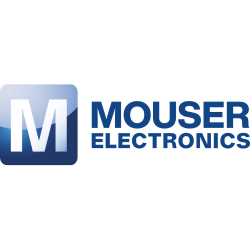Understanding & Mitigating Risks of Grey Market Electronics
Buyer News | 09-08-2024 | By Mouser Electronics

Imagine a large healthcare provider experiencing a catastrophic system failure during routine equipment updates. The root cause? Critical components sourced from grey market suppliers, carrying hidden vulnerabilities undetectable until they were activated. These components lacked proper validation, testing, or may have been tampered with, leading to unforeseen and potentially devastating consequences.
While this scenario is fictional, similar events occur frequently in various industries. Organisations trying to cut costs by purchasing grey market electronics often face harsh realities, including expensive repairs and exposure to significant risks.
Understanding Grey Market Electronics
Grey market electronics refer to products sold through unauthorised or unintended channels, even though these sales are technically legal. Often, the products themselves are genuine, but they are not intended for the market in which they are sold, leading to discrepancies in specifications, warranties, and support. Without stringent checks throughout the supply chain, grey market components can infiltrate various industries, from consumer electronics to critical infrastructure.
Counterfeit components are well-known for their risks, but grey market electronics also pose significant dangers. These products, while legitimate, are distributed in ways not authorised by the original manufacturer. This unauthorised distribution can lead to components being compromised, posing substantial risks.
Common Practices in the Grey Market
A prevalent practice in the grey market involves re-marking integrated circuits (ICs) or chips to present them as higher-performance versions. For instance, a seller might take outdated or lower-grade ICs and alter them to appear as more advanced models. By erasing the original markings and adding new, misleading identifiers, these "real" but tampered ICs are sold at a premium, posing risks of failure in critical applications, particularly in industries like aerospace or healthcare where reliability is non-negotiable.
Similarly, unauthorised distributors might sell altered optical transceivers as high-performance models. They might replace internal components or simply change labels to suggest a higher data rate capacity. These tampered devices are then sold at lower costs, leading buyers to believe they are acquiring more capable components than they actually are.
Sources of Grey Market Electronics
Unauthorised distributors often source grey market electronics by acquiring excess inventory from other regions or selling products in markets where they lack rights. Overstock sales and parallel imports further fuel the grey market, introducing products intended for one region into another without the manufacturer's consent.
The grey market is not just about products; it also involves legal and ethical complexities. While these components are not illegal, they are not supported or authorised for sale in specific ways, creating ethical challenges for buyers and sellers alike concerning warranties, support, and brand reputation.
Risks Associated with Grey Market Electronics
The complexities surrounding grey market electronics bring serious risks.
Quality and Reliability Concerns:
Components sold through authorised channels are subject to rigorous standards set by the manufacturer. Grey market electronics may not meet these standards, leading to compatibility issues, increased failure rates, and unplanned maintenance costs.
Warranty and Support Issues:
Manufacturers typically do not honour warranties for grey market items. If these components malfunction, the lack of support can lead to delays and additional costs in sourcing replacements or obtaining technical assistance.
Security Vulnerabilities:
Grey market electronics may not receive regular updates and patches from manufacturers, making them susceptible to cyber threats. Without secure software updates, networks can become exposed to data breaches and other security incidents.
Reputational Damage:
Engaging with unauthorised suppliers can damage a company's reputation, signalling a lack of commitment to quality and ethical practices.
Identifying Grey Market Products
How can you tell if your components are from the grey market? Here are some indicators:
Price Discrepancies:
If a product's price is significantly lower than the market average, it could be a red flag. Unusually low prices often indicate grey market sourcing, warranting further investigation into the product's legitimacy.
Packaging and Documentation:
Upon receiving products, inspect the packaging and documentation for inconsistencies or signs of tampering. Grey market products might arrive in non-standard packaging or lack essential documentation, such as user manuals and warranty cards, typically provided by authorised dealers.
Supplier Verification:
Before purchasing, vet suppliers thoroughly. Ensure that the manufacturer authorises them to distribute their products and review their track record for any issues related to authenticity or grey market dealings.
Procurement Policies and Training:
One of the best defences against grey market components is to establish a clear procurement policy that mandates sourcing exclusively from pre-approved, authorised distributors. This policy should include procedures for validating the authenticity of components, such as requiring certificates of conformity and traceability records. Regular audits can ensure compliance with these guidelines.
Additionally, consider implementing annual training for procurement teams to stay informed about the latest grey market trends and tactics. By keeping procurement professionals well-versed in these issues, your organisation can mitigate the risks associated with grey market electronics.
For more in-depth information, you can visit the original post here.

